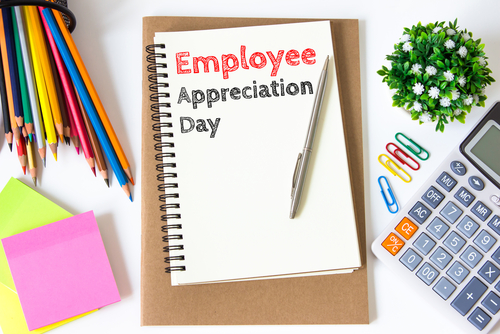The end of the year has been a time of gift-giving and appreciation since ancient times and across a wide variety of cultures and religious traditions. Combine that with many corporate goals’ being based on annual cycles aligned with the calendar year, and it’s no surprise that businesses like to show employee appreciation and recognize employee achievements at the end of the year or the very beginning of a new year.
Employee Appreciation Day
Another common time to demonstrate employee appreciation is on Employee Appreciation Day, which falls on the first Friday of March each year in the United States, the United Kingdom, and Canada.
Of course, some employers don’t take advantage of these events to show appreciation to their staff, but employee appreciation can and really should be a year-round effort. That doesn’t mean every business day needs to include an awards ceremony, but, according to Taylor Smith, CEO and cofounder of Blueboard, there are a few simple strategies businesses can follow throughout the year to demonstrate a more continuous level of employee appreciation.
1. Build a culture of recognition. Start by offering rewards that encourage employees to inspire each other all year. People are more likely to discuss a free Disneyland trip they took than what they bought with a $100 gift card, Smith notes.
2. Automate recognition, but find the right balance. No one wants an artificial intelligence (AI) bot telling them “great job,” but enrolling in a software-based program or creating their own reminders will help ensure recognition becomes part of an embedded ongoing process at your company.
3. Train managers on recognition. Effective recognition shouldn’t be left to chance. Managers at any level should have the tools to recognize their direct reports and understand the expectations on how often they should do so, along with training and education about what works well, what doesn’t, and important best practices to get the best results.
4. Outsource your recognition program. Outsourcing tends to get a negative reaction, but designating a potentially complex process to an experienced external team allows leaders to have fun with recognition without the stress of administrative minutiae.
In today’s labor environment, employees have many choices of where to work, and they value feedback and recognition. Therefore, a sound people strategy should not limit employee recognition to one or two compulsory events per year but rather make employee recognition a year-round initiative.
Lin Grensing-Pophal is a Contributing Editor at HR Daily Advisor.

